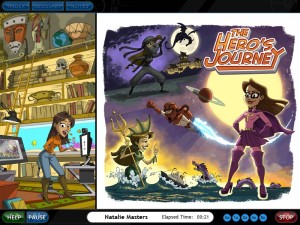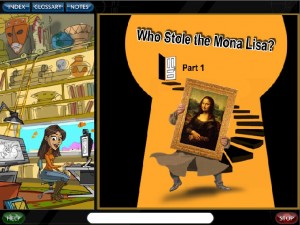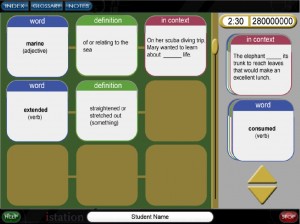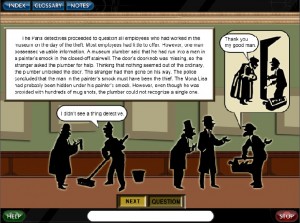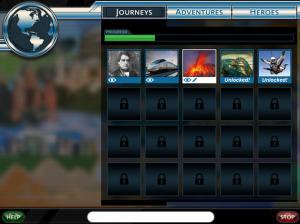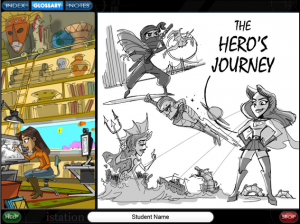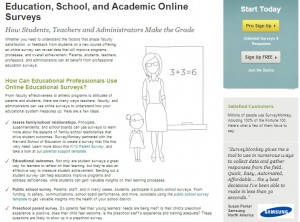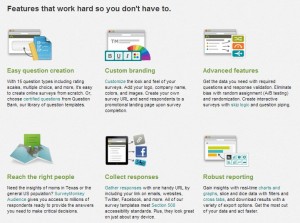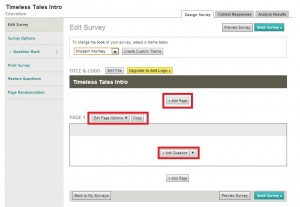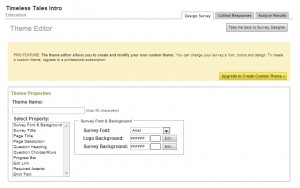As a single mom balancing a career and grad school, I’m not sure what I’d do if my coursework at Post University didn’t cleanly align with my work as an instructional designer at Istation.
I’ve been working on Timeless Tales with Paige Turner, an online reading intervention for struggling middle school students, about as long as I’ve been studying instructional design and technology at Post. My coursework has guided the design of the curriculum I’m building all along. It’s kind of a beautiful thing.
In the world of education, we often talk about how students need to be able to apply what they’ve learned in the most authentic setting possible in order to gain a deep understanding, to generalize and internalize their new knowledge. In my case, as a student, that’s exactly what I get to do.
In the Beginning
As I initially developed the broad themes and content for the curriculum, I took classes about the general state of education and the growing implications of technology in education. I took classes about the population of students currently working their way through the system. I studied the processes of the brain, measured and analyzed data, and immersed myself in research about how humans learn.
I studied standardized test scores, data about poverty and its impact on student success, and research about how the 21st century student thinks and functions differently than the 19th or 20th century student did.

I learned how technology is impacting our global economy, and discussed with my colleagues the myriad ways new trends in technology will likely impact the types of skills that today’s students will need in the future.
As I was learning these things, I designed the scope of the program to align with who its users would be. I thought about content that would get the attention of a would-be dropout. I thought about the social media world and how we might leverage it to build opportunities for collaboration. I thought about the English Language Learners making their way through America’s school system today and designed language supports to meet their needs.
Every new piece of information I devoured was deliberately applied to the overall design of Timeless Tales.
 During my first year at Post, most of my work at Istation was theoretical, in that I was mapping out the path students would take through the program. I studied the state assessments to pinpoint the skills they’d need in order to graduate. Then, I planted these skills in the context of the overreaching theme of the hero’s journey and the power of storytelling to shape and impact human history.
During my first year at Post, most of my work at Istation was theoretical, in that I was mapping out the path students would take through the program. I studied the state assessments to pinpoint the skills they’d need in order to graduate. Then, I planted these skills in the context of the overreaching theme of the hero’s journey and the power of storytelling to shape and impact human history.
I wanted the program itself to tell a story. I wanted to give struggling and demotivated teenagers a reason to master the skills the education system deems critical for their success.
But more than that, I wanted to empower them. Our world needs problem-solvers. We need innovative thinkers who can create solutions.
Timeless Tales is a reading program. But the value of being able to read and comprehend texts does not end at the edges of the academic world. Reading really is power. Mastery of reading is synonymous with mastery of the new world.

History shows that a lack of access to information can cripple entire populations.
We’ve got a dropout problem in the U.S., and if these kids can’t read by the time they leave school, they are at a grave disadvantage.
The information highway is perhaps the most empowering technological advance ever devised. If you want to know something, all you have to do is get online and read about it. It really is that simple.
But even further, if you want to transform knowledge into a vehicle for change, you’ve also got to be able to think critically about what you read, to analyze and synthesize information, to use what you know to create something new.

As a curriculum designer, I wanted to shape a virtual experience that could help empower these students. I wanted them to know that they can tell their own stories, shape their own futures, and use the skills and talents they have to make the world better. And I wanted to give them access to the tremendous wealth of knowledge available today.

From Theory to Practice
As I moved on to the upper level courses focused on leveraging technology tools for instructional design, the production of Timeless Tales started to take off. We moved from the high-level goals, the analysis of needs, and the design phases into the nitty gritty of development and production.
The first 600-level course I took focused on the ADDIE design model. I don’t think that ADDIE is necessarily the end-all, be-all of instructional design, but working my way through it enabled me to create legitimate design documents that helped bring my vision for Timeless Tales into reality.

I was able to follow a process to communicate my vision to the entire production team, and I was able to use documentation of my research to justify the program’s layout to our educational consultants and upper management teams.
So I’ve got goal. I’ve got a map. I’ve got buy-in. Now, what does it LOOK like?
That’s where my current course on the integration of technology into teaching and learning comes in. With a focus on authentic and motivating learning experiences, we’ve delved into technological tools and lesson designs that can deeply enrich a curriculum like Timeless Tales.
Seven weeks ago, I began this course. In seven weeks, we’ve organized a game-based learning team to brainstorm ways to translate educational objectives into fun and engaging games that accurately measure student success. We’ve scrapped standardized, multiple-choice style assessments in several areas of the program.
Last week, one of our engineers sent me fifty ideas for game-based learning experiences. A brand-new programmer designed three vocabulary activities around the idea that students should have high-level conceptual understanding of words as well as the skill of being able to plug those words into appropriate contexts and sentences.
Our lead engineer designed an infrastructure wherein students will be able to annotate texts, share their annotations with others in the program, and refer back to them anytime.
Our creative director has mapped out three different role-playing scenarios to replace three learning activities that consisted of students’ reading a passage and then answering some questions.
We’ve generated new content, new stories to tell. We’re writing about real-life heroes solving real-life problems. We’ve created a library of texts written on a level that a struggling reader can actually access and understand, and we’ve created choice-based incentives for them to explore the richness of the new content we offer.
In short, what I’ve learned in this course has directly impacted the development of Timeless Tales. We’re on a renewed mission to innovate, and every step we take remains aligned with our ultimate goal – to create a positive and empowering reading experience for a kid who may not even care anymore.
We’re trying to tell a really important story – the story of people and what they can do to shape the future. And we’re working really hard at designing Timeless Tales to engage students with a variety of technological tools.
Everything we build is built to communicate, “You can do this. You can read. You can think. You can analyze. You can create. And what you create matters, because just like every other story that’s ever been told, your story matters, too, kid.”
References
Churches, A. (2009). Bloom’s Digital Taxonomy: It’s not about the tools. It’s about using the tools to facilitate learning. http://edorigami.wikispaces.com.
Clark, D. (2011, September 26). ADDIE. Retrieved from Big Dog and Little Dog’s Performance Juxtaposition: http://www.nwlink.com/~donclark/history_isd/addie.html
Culatta, R. (2011). Instructional Design. Retrieved August 30, 2012, from ADDIE Model: http://www.instructionaldesign.org/models/addie.html
Hodell, C. (2011). ISD From the Ground Up: A No-Nonsense Approach to Instructional Design. Chelsea, MI: Sheridan Books, Inc.
Istation. (2012, June). Istation Reading. Retrieved September 3, 2012, from Istation: http://www.istation.com/Curriculum/ReadingProgram
Moore, D. L. (n.d.). Why Vocabulary Instruction Matters. Best Practices in Secondary Education.
Sincero, S. M. (2011). Cognitive Learning Theory. Retrieved from Experiment Resources: http://www.experiment-resources.com/cognitive-learning-theory.html
Tapscott, D. (2008). grown up digital. McGraw Hill.
Thagard, P. (2005). Mind: Introduction to Cognitive Science (2nd ed.). Cambridge: Massachusetts Institute of Technology (MIT).
Toshalis, E., & Nakkula, M. J. (September 2012). Motivation, Engagement, and Student Voice. Education Digest, 78(1), 29-35.
Zirbel, E. (n.d.). Teaching to Promote Deep Understanding and Instigate Conceptual Change. Tufts University.
